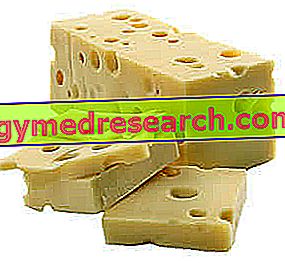Generality
Borage seed oil ( Borago officinalis ) - cold pressed - is the most important source of gamma-linolenic acid (GLA), a semi-essential fatty acid belonging to the omega-six family.

However, natural sources of GLA are very rare, contained in important percentages only in borage oil and in that of Enotera and Blackcurrant.
The utility of introducing dietary supplements based on gamma-linolenic acid derives from the decline in activity of the Delta-6 desaturase enzyme (involved in the conversion of linoleic acid to GLA) during aging, during various diseases (such as the diabetes) and in the presence of a diet rich in saturated or hydrogenated fatty acids, but low in vitamins.
Indications
Why is borage oil used? What is it for?
The virtues of Borage oil are linked to the role of GLA in the human body.
This fatty acid, converting into diomogamma-linolenic acid (DGLA), promotes the production of prostaglandins of series 1 (PGE1), which are equipped with antiplatelet, cardioprotective, antiatherogenic, vasodilatory and anti-inflammatory activity.
The diomogamma-linolenic acid also antagonizes prostacyclin and PGE2 (which have opposite effects to PGE1) and has eudermic and immunostimulant properties.
On these metabolic assumptions are based many therapeutic properties ascribed to borage oil, which include:
- reduction of cardiovascular risk,
- improved skin and nail health,
- reduction of symptoms associated with rheumatoid arthritis, premenstrual syndrome, eczema and psoriasis,
- usefulness in the control of hypertension and high cholesterol.
Despite what has been said so far, we must remember a very important metabolic detail: once ingested, the GLA acid is easily converted into diomogamma-linolenic acid (DGLA) by an elongase.

High levels of arachidonic acid depress the immune activity and enhance the inflammatory response, just the opposite of what is done by their precursor present in the borage seed oil.
Therefore, in order to preserve the biological utility of GLA, it is recommended to take borage oil in the context of a healthy diet, poor in saturated fatty acids and rich in polyunsaturated fatty acids of the omega 3 series.
Property and Effectiveness
What benefits has borage oil shown during the studies?
The scientific literature brings numerous examples related to the utility of borage oil - and more precisely of GLA - in the clinical setting.
From both experimental and clinical trials, it emerges that the adequate intake of borage oil in an anti-inflammatory dietary context could:
- It is useful in controlling the symptomatology and clinical evolution of inflammatory disorders, such as rheumatoid arthritis, Sjogren's syndrome and rectal ulcerative colitis;
- Improve the clinical course of dermatological diseases such as atopic dermatitis;
- Precious to be revealed during osteoporosis, diabetic neuropathy, respiratory distress, hypertension and hyperlipidemia (mostly experimental data).
Moreover, recent evidence would demonstrate a certain activity of GLA in the control of cancerous pathologies such as cerebral glioma.
Not adequately supported would seem to be the improvement activities of borage oil against dyskinesias and premenstrual syndrome.
Doses and method of use
How to use borage oil
The borage oil dosages proposed in the various studies vary considerably according to the pathology studied and the content of GLA.
Classically, in the management of rheumatoid arthritis dosages of GLA ranging from 360 mg to 2.8 g per day have been proposed, divided into several assumptions.
For the treatment of atopic dermatitis, on the other hand, the most used dosages are between 320 and 480 mg per day, while the management of hypertriglyceridemia can take advantage of generally higher doses
It is recommended, especially in those who use chronic borage oil, to ascertain the source of extraction and its degree of purity, especially in terms of alkaloids present.
Side effects
Borage oil could increase the incidence of gastro-enteric reactions such as nausea, vomiting, flatulence, diarrhea and abdominal bloating.
Although rarely, and especially in patients undergoing piscopharmacological therapy, unpredictable behavioral disorders have been described following the use of this supplement.
Contraindications
When should borage oil not be used?
The use of borage oil is contraindicated in patients who are hypersensitive to the active ingredient.
Pharmacological Interactions
Which drugs or foods can modify the effect of borage oil?
There are several noteworthy drug interactions between borage oil and active ingredients.
More precisely, the contextual assumption of:
- Borage oil and neuroleptic drugs such as chlorpromazine could induce unexpected behavioral changes;
- Borage oil and non-steroidal anti-inflammatory drugs, rather than antithrombotic agents or oral anticoagulants, could potentiate the haemofluidizing action;
- Borage oil and garlic or Ginkgo biloba could increase the risk of bleeding.
Precautions for use
What do you need to know before taking borage oil?
The use of borage oil should be avoided during pregnancy, in the subsequent breastfeeding period and before any surgical procedures.
Great attention, as well as strict medical supervision, should also be requested in patients with disorders such as epilepsy, schizophrenia and coagulation disorders.
The same precautions should be taken in patients undergoing drug therapy with neuroleptic drugs and oral anticoagulants.
According to recent evidence, borage oil could present alkaloids.



